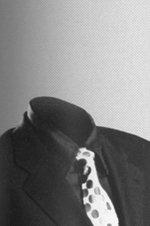Wine Tips from Sommelier Julee Resendez
Tasting like a professional comprises three major elements: sight, smell, and (of course) taste.
Sight: The color will help you determine whether a wine is older or younger. For whites, a younger wine has a golden yellow hue, and in age it will become more orange and copper. Red wines are the exact opposite: when a red has aged for awhile, it will lose much of its color and become orange to reddish brown, whereas in its youth it will have blue and deep red hues.
What do “legs” mean? It used to be thought as a determination of
sugar content in a wine, but actually it’s an indicator of the alcohol content and therefore, viscosity.
Also look for clarity – if the wine is hazy, has bubbles, etc. It is best to assess the wine against a white background, making it easier to judge the limpidity (clearness or transparency).
The Nose: Smell is an important sensory element. The nose detects odor, and with it the mind’s library of sense memories can transport you to a particular time, place, and moment where you can smell the lavender in your Grandmother’s garden, or the heady smell of jasmine from a vacation in Crete. This library that is catalogued in your mind will help you to identify varietals, region, or even a vintage in the glass. Use adjectives that strike an everyday note with you – straw, honeysuckle, pear or whatever they may be. It is important to remember that there are no wrong answers when it comes to smell: every person has a distinct nose. Look for elements of intensity, aromatic characteristics, and age.
Taste: This is the part that we all enjoy, but it is important to actually note what is in your mouth. Munch on the wine, chew it, slurp it, and then spit. It is amusing to me to see serious wine professionals bending over a spittoon; it brings a human touch to tasting for me. Spitting is important, though, as it allows you to determine the characteristics of a wine without the alcohol interfering – especially when you have several hundred wines to taste in one sitting! In a traditional approach to wine, there are four flavor profiles: sweet, salty, acid, and bitter. There’s also a thermal aspect-meaning: the warmth of a wine in your mouth can indicate the amount of alcohol in the wine.
When you learn to geographically identify the location of a vineyard a wine came from, you are more able to organize your flavor profiles. In wines from colder climates the acidity level is generally higher and the alcohol level lower. The opposite is true in a hotter climate. Think of a hot sun baking the grape the way it tans your skin, and brings color to your face. Remember where you are when you taste, be transported, and don’t forget to take notes – they’ll help when you have to reference the wine for the future.






